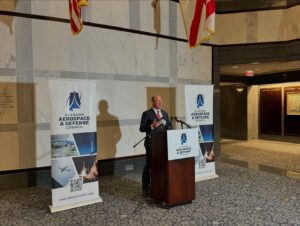Obamas return to the White House, unveil official portraits

Former President Barack Obama and his wife, Michelle, returned to the White House Wednesday, unveiling official portraits with a modern vibe in an event that set humor and nostalgia over his presidency against the current harsh political talk about the survival of democracy. While her husband cracked a few jokes about his gray hair, big ears, and clothes in his portrait, Mrs. Obama, a descendant of slaves, said the occasion for her was more about the promise of America for people like herself. “Barack and Michelle, welcome home,” declared President Joe Biden as the gathering cheered. Biden, who was Obama’s vice president, praised his former boss’ leadership on health care, the economy, and immigration and said nothing could have prepared him any better for being president than serving with Obama for those eight years. “It was always about doing what was right,” he said. The portrait of Obama, America’s 44th and first Black president, doesn’t look like any of his predecessors, nor does Michelle Obama’s look like any of the women who filled the role before her. Obama stands expressionless against a white background, wearing a black suit and gray tie in the portrait by Robert McCurdy that looks more like a large photograph than an oil-on-canvas portrait. The former first lady, her lips pursed, is seated on a sofa in the Red Room in a strapless, light blue dress. She chose artist Sharon Sprung for her portrait. Scores of former members of Obama’s administration were on hand for the big reveal. Obama noted that some of them in the East Room audience had started families in the intervening years and feigned disappointment “that I haven’t heard of anyone naming a kid Barack or Michelle.” He thanked McCurdy for his work, joking that the artist, who is known for his paintings of public figures from Nelson Mandela to the Dalai Lama, had ignored his pleas for fewer gray hairs and smaller ears. “He also talked me out of wearing a tan suit, by the way,” Obama quipped, referring to a widely panned appearance as president in the unflattering suit. Obama went on to say his wife was the “best thing about living in the White House,” and he thanked Sprung for “capturing everything I love about Michelle, her grace, her intelligence — and the fact that she’s fine.” Michelle Obama, when it was her turn, laughingly opened by saying she had to thank her husband for “such spicy remarks.” To which he retorted, by way of explanation, “I’m not running again.” Then the former first lady turned serious, drawing a connection between unveiling the portraits and America’s promise for people with backgrounds like her own, a daughter of working-class parents from the South Side of Chicago. “For me, this day is not just about what has happened,” she said. “It’s also about what could happen, because a girl like me, she was never supposed to be up there next to Jacqueline Kennedy and Dolley Madison. She was never supposed to live in this house, and she definitely wasn’t supposed to serve as first lady.” Mrs. Obama said the portraits are a “reminder that there’s a place for everyone in this country.” Tradition holds that the sitting president invites his immediate predecessor back to the White House to unveil his portrait, but Donald Trump broke with that custom and did not host Obama. So, Biden scheduled a ceremony for his former boss. Mrs. Obama said the tradition matters “not just for those of us who hold these positions, but for everyone participating in and watching our democracy.” In remarks that never mentioned Trump but made a point as he continues to challenge his 2020 reelection loss, she added: “You see the people, they make their voices heard with their vote. We hold an inauguration to ensure a peaceful transition of power … and once our time is up, we move on.” McCurdy, meanwhile, said his “stripped down” style of portraiture helps create an “encounter” between the person in the painting and the person looking at it. “They have plain white backgrounds, nobody gestures, nobody — there are no props because we’re not here to tell the story of the person that’s sitting for them,” McCurdy told the White House Historical Association during an interview for its “1600 Sessions” podcast. “We’re here to create an encounter between the viewer and the sitter,” he said. “We’re telling as little about the sitter as possible so that the viewer can project onto them.” He works from a photograph of his subject, selected from about 100 images, and spends at least a year on each portrait. Subjects have no say in how the painting looks. McCurdy said he knows he’s done “when it stops irritating me.” Obama’s portrait went on display in the Grand Foyer, the traditional showcase for paintings of the two most recent presidents. His portrait replaced Bill Clinton’s near the stairway to the residence, the White House tweeted Wednesday night. George W. Bush’s portrait hangs on the wall opposite Obama’s in the foyer. Mrs. Obama’s portrait was hung one floor below on the Ground Floor, joining predecessors Barbara Bush, Hillary Clinton, and Laura Bush, according to the tweet. Two spokespeople for Trump did not respond to emailed requests for comment on whether artists have begun work on White House portraits for Trump and former first lady Melania Trump. Work, however, is underway on a separate pair of Trump portraits bound for the collection held by the National Portrait Gallery, a Smithsonian museum. The White House Historical Association, a nonprofit organization founded in 1961 by first lady Jacqueline Kennedy and funded through private donations and sales of books and an annual Christmas ornament, helps manage the White House portrait process. Since the 1960s, the association has paid for most of the portraits in the collection. Congress bought the first painting in the collection, of George Washington. Other portraits of early presidents and first ladies often came to the White House as gifts. Republished with the permission of The
Madeleine Albright, 1st female U.S. secretary of state, dies
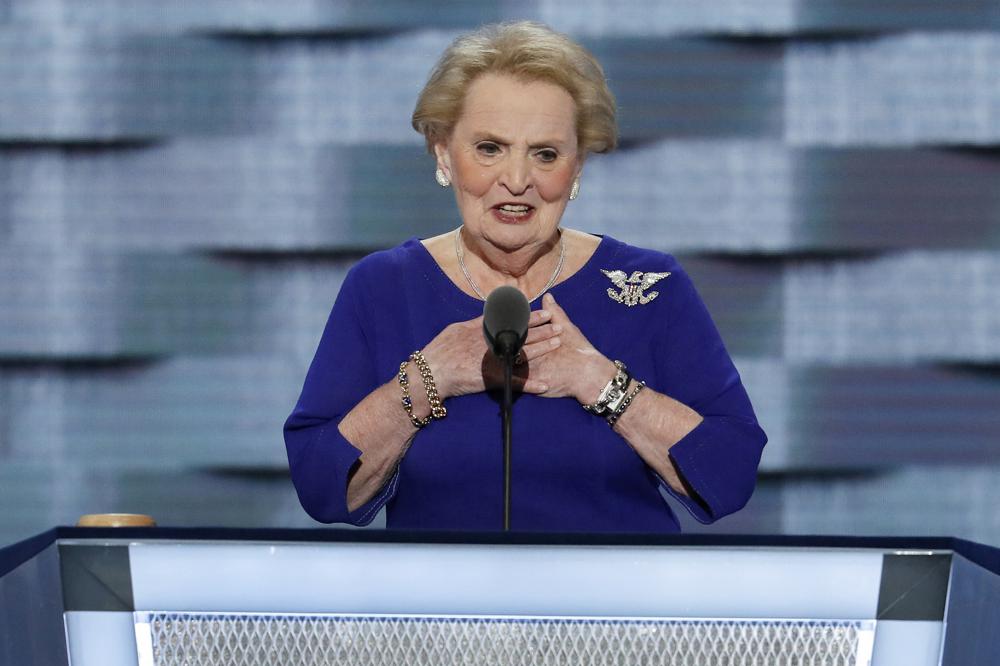
Madeleine Albright, a child refugee from Nazi- and then Soviet-dominated Eastern Europe who rose to become the first female secretary of state and a mentor to many current and former American statesmen and women, died Wednesday of cancer, her family said. She was 84. A lifelong Democrat who nonetheless worked to bring Republicans into her orbit, Albright was chosen in 1996 by President Bill Clinton to be America’s top diplomat, elevating her from U.S. ambassador to the United Nations, where she had been only the second woman to hold that job. As secretary of state, Albright was the highest-ranking woman in the history of the U.S. government. She was not in the line of succession to the presidency, however, because she was born in what was then Czechoslovakia. Still, she was universally admired for breaking a glass ceiling, even by her political detractors. “We have lost a loving mother, grandmother, sister, aunt, and friend,” her family said in a statement. President Joe Biden ordered flags at the White House and other federal buildings and grounds to be flown at half-staff until March 27. Outpourings of condolences came quickly. Biden said, “America had no more committed champion of democracy and human rights than Secretary Albright, who knew personally and wrote powerfully of the perils of autocracy.” “When I think of Madeleine,” Biden added, “I will always remember her fervent faith that ‘America is the indispensable nation.’” Secretary of State Antony Blinken said Albright was “a brilliant diplomat, a visionary leader, a courageous trailblazer, a dedicated mentor, and a great and good person who loved the U.S. deeply and devoted her life to serving it.” Clinton called her “one of the finest Secretaries of State, an outstanding U.N. Ambassador, a brilliant professor, and an extraordinary human being.” “And through it all,” Clinton added, “even until our last conversation just two weeks ago, she never lost her great sense of humor or her determination to go out with her boots on, supporting Ukraine in its fight to preserve freedom and democracy.” Former President George W. Bush said Albright “lived out the American dream and helped others realize it. … She served with distinction as a foreign-born foreign minister who understood firsthand the importance of free societies for peace in our world.” Linda Thomas-Greenfield, U.S. envoy to the United Nations, honored Albright as a “trailblazer and a luminary” in remarks on the General Assembly floor. In 2012, President Barack Obama awarded Albright the Medal of Freedom, the nation’s highest civilian honor, saying her life was an inspiration to all Americans. Albright remained outspoken through the years. After leaving office, she criticized Bush for using “the shock of force” rather than alliances to foster diplomacy and said Bush had driven away moderate Arab leaders and created the potential for a dangerous rift with European allies. As a refugee from Czechoslovakia who saw the horrors of both Nazi Germany and the Iron Curtain, she was not a dove, and she played a leading role in pressing for the Clinton administration to get militarily involved in the conflict in Kosovo. She also took a hard line on Cuba, famously saying at the United Nations that the Cuban shootdown of a civilian plane was not “cojones” but rather “cowardice.” Albright advised women “to act in a more confident manner” and “to ask questions when they occur and don’t wait to ask.” “It took me quite a long time to develop a voice, and now that I have it, I am not going to be silent,” she told HuffPost Living in 2010. When the Senate Foreign Relations Committee asked her in January 2007 whether she approved of Bush’s proposed “surge” in U.S. troops in bloodied Iraq, she responded: “I think we need a surge in diplomacy. We are viewed in the Middle East as a colonial power, and our motives are suspect.” Albright was an internationalist whose point of view was shaped in part by her background. Her family fled Czechoslovakia in 1939 as the Nazis took over their country, and she spent the war years in London. After the war, as the Soviet Union took over vast chunks of Eastern Europe, her father, a Czech diplomat, brought his family to the United States. As secretary of state, Albright played a key role in persuading Clinton to go to war against the Yugoslav leader Slobodan Milosevic over his treatment of Kosovar Albanians in 1999. As U.N. ambassador, she advocated a tough U.S. foreign policy, particularly in the case of Milosevic’s treatment of Bosnia and NATO’s intervention in Kosovo, was eventually dubbed “Madeleine’s War.” “My mindset is Munich,” she said frequently, referring to the German city where the Western allies abandoned her homeland to the Nazis. Albright helped win Senate ratification of NATO’s expansion and a treaty imposing international restrictions on chemical weapons. She led a successful fight to keep Egyptian diplomat Boutros Boutros-Ghali from a second term as secretary-general of the United Nations. He accused her of deception and posing as a friend. And she once exclaimed to Colin Powell, then chairman of the Joint Chiefs of Staff, who would later succeed her as secretary of state: “What’s the point of having this superb military you’re always talking about if we can’t use it?” Powell, who died last year, recalled in a memoir that Albright’s comment almost made him have an “aneurysm.” Despite her championing of diplomacy in the Middle East and a late Clinton-era foray to North Korea, which made her the highest-ranking U.S. official to visit the Stalinist state, Albright drew criticism for her support of sanctions against Iraq that many blame for humanitarian suffering in the country under Saddam Hussein. “I am an eternal optimist,” Albright said in 1998, amid an effort as secretary of state to promote peace in the Middle East. But she said getting Israel to pull back on the West Bank and the Palestinians to rout terrorists posed serious problems. Albright made limited progress at first in trying to expand the
Supreme Court orders ‘Remain in Mexico’ policy reinstated
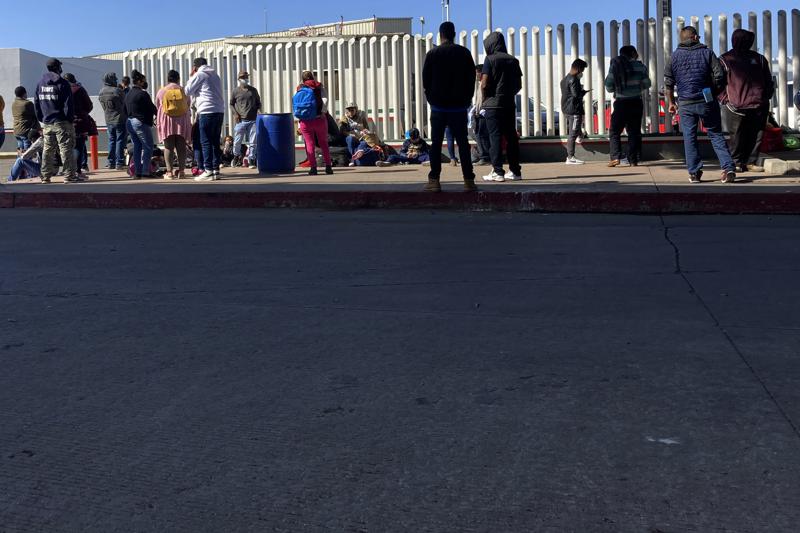
The Supreme Court on Tuesday said the Biden administration likely violated federal law in trying to end a Trump-era program that forces people to wait in Mexico while seeking asylum in the U.S. With three liberal justices in dissent, the high court refused to block a lower court ruling ordering the administration to reinstate the program informally known as Remain in Mexico. It’s not clear how many people will be affected and how quickly. Under the lower court ruling, the administration must make a “good faith effort” to restart the program. There also is nothing preventing the administration from trying again to end the program, formally called Migrant Protection Protocols. A federal judge in Texas had previously ordered that the program be reinstated last week. Both he and the 5th U.S. Circuit Court of Appeals refused the administration’s request to put the ruling on hold. Justice Samuel Alito ordered a brief delay to allow the full court time to consider the administration’s appeal to keep the ruling on hold while the case continues to make its way through the courts. The 5th Circuit ordered expedited consideration of the administration’s appeal. The court offered little explanation for its action, although it cited its opinion from last year rejecting the Trump administration’s effort to end another immigration program, Deferred Action for Childhood Arrivals. In that case, the court held that the decision to end DACA was “arbitrary and capricious,” in violation of federal law. The administration has “failed to show a likelihood of success on the claim that the memorandum rescinding the Migrant Protection Protocols was not arbitrary and capricious,” the court wrote Tuesday in an unsigned order. The three dissenting justices, Stephen Breyer, Elena Kagan, and Sonia Sotomayor, did not write an opinion expressing their views of the case. In a statement, the Department of Homeland Security said it regrets that the high court declined to issue a stay. The department said it would continue to challenge the district court’s order. The American Civil Liberties Union called on the administration to present a fuller rationale for ending Remain in Mexico that could withstand court scrutiny. “The government must take all steps available to fully end this illegal program, including by re-terminating it with a fuller explanation. What it must not do is use this decision as cover for abandoning its commitment to restore a fair asylum system,” said Omar Jadwat, director of the ACLU’s immigrant rights project. During Donald Trump’s presidency, the policy required tens of thousands of migrants seeking asylum in the U.S. to turn back to Mexico. It was meant to discourage asylum seekers, but critics said it denied people the legal right to seek protection in the U.S. and forced them to wait in dangerous Mexican border cities. The judge, U.S. District Judge Matthew J. Kacsmaryk in Amarillo, Texas, ordered that the program be reinstated in response to a lawsuit filed by the states of Texas and Missouri, whose governors have been seeking to reinstate some of the hard-line anti-immigration policies of the Trump administration. The Biden administration argued in briefs that the president has “clear authority to determine immigration policy” and that Homeland Security Secretary Alejandro Mayorkas had discretion in deciding whether to return asylum seekers to Mexico. The policy has been dormant for more than a year, and the administration argued that abruptly reinstating it “would prejudice the United States’ relations with vital regional partners, severely disrupt its operations at the southern border, and threaten to create a diplomatic and humanitarian crisis.” The Trump administration largely stopped using the “Remain in Mexico” policy at the start of the pandemic, at which point it began turning back virtually everyone crossing the Southwest border under a different protocol — a public health order that remains in effect. President Joe Biden suspended the program on his first day of office, and the Homeland Security Department ended it in June. Kacsmaryk was nominated to the federal bench by Trump. The 5th Circuit panel that ruled Thursday night included two Trump appointees, Andrew Oldham and Cory Wilson, along with Jennifer Walker Elrod, nominated to the appeals court by President George W. Bush. At the high court, at least five of the six conservative justices, including three Trump appointees, voted for the restart of the program. Under the court’s opaque treatment of emergency appeals, the justices don’t always say publicly how they voted. Republished with the permission of the Associated Press.
GOP poised to block bipartisan probe of January 6 insurrection
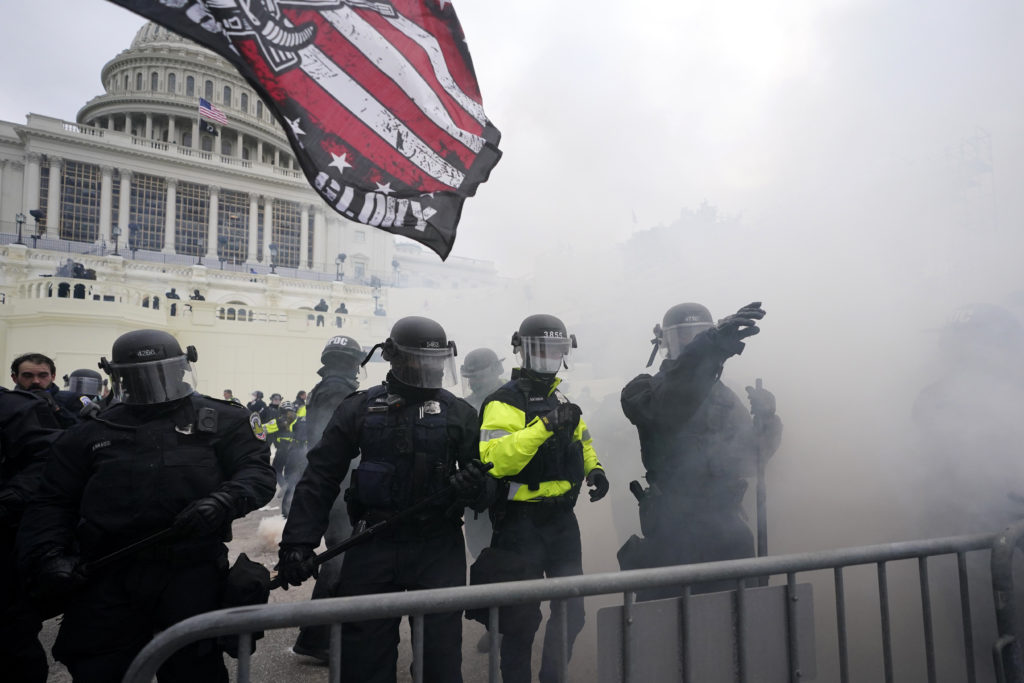
Senate Republicans are poised to block the creation of a special commission to study the deadly Jan. 6 attack on the Capitol, dashing hopes for a bipartisan panel amid a GOP push to put the violent insurrection by Donald Trump’s supporters behind them. Broad Republican opposition was expected in what would be the first successful Senate filibuster of the Biden presidency, even as the family of a Capitol Police officer who died that day and other officers who battled rioters went office to office asking GOP senators to support the commission. The siege was the worst attack on the Capitol in 200 years and interrupted the certification of Democrat Joe Biden’s win over Trump. Though the bill passed the House earlier this month with the support of almost three dozen Republicans, GOP senators said they believe the commission would eventually be used against them politically. And former President Trump, who still has a firm hold on the party, has called it a “Democrat trap.” The expected vote is emblematic of the profound mistrust between the two parties since the siege, which has sowed deeper divisions on Capitol Hill even though lawmakers in the two parties fled together from the rioters that day. The events of Jan. 6 have become an increasingly fraught topic among Republicans as some in the party have downplayed the violence and defended the rioters who supported Trump and his false insistence that the election was stolen from him. While initially saying he was open to the idea of the commission, which would be modeled after an investigation of the 9/11 terrorist attacks, Senate Republican leader Mitch McConnell turned firmly against it in recent days. He has said he believes the panel’s investigation would be partisan despite the even split among party members. McConnell, who once said Trump was responsible for “provoking” the mob attack on the Capitol, said of Democrats: “They’d like to continue to litigate the former president, into the future.” Biden, asked about the commission at a stop in Cleveland, said Thursday, “I can’t imagine anyone voting against” it. The Republican opposition to the bipartisan panel has revived Democratic pressure to do away with the filibuster, a time-honored Senate tradition that requires a vote by 60 of the 100 senators to cut off debate and advance a bill. With the Senate evenly split 50-50, Democrats need the support of 10 Republicans to move to the commission bill, sparking fresh debate over whether the time has come to change the rules and lower the threshold to 51 votes to take up legislation. The Republicans’ political arguments over the violent siege — which is still raw for many in the Capitol, almost five months later — have frustrated not only Democrats but also those who fought off the rioters. Michael Fanone, a Metropolitan Police Department officer who responded to the attack, said between meetings with Republican senators that a commission is “necessary for us to heal as a nation from the trauma that we all experienced that day.” Fanone has described being dragged down the Capitol steps by rioters who shocked him with a stun gun and beat him. Sandra Garza, the girlfriend of Capitol Police Officer Brian Sicknick, who collapsed and died after battling the rioters, said of the Republican senators: “You know they are here today and with their families and comfortable because of the actions of law enforcement that day.” “So I don’t understand why they would resist getting to the bottom of what happened that day and fully understanding how to prevent it. Just boggles my mind,” she said. Video of the rioting shows two men spraying Sicknick and another officer with a chemical, but the Washington medical examiner said he suffered a stroke and died from natural causes. Garza attended the meetings with Sicknick’s mother, Gladys Sicknick. In a statement on Wednesday, Mrs. Sicknick suggested the opponents of the commission “visit my son’s grave in Arlington National Cemetery and, while there, think about what their hurtful decisions will do to those officers who will be there for them going forward.” Dozens of other police officers were injured as the rioters pushed past them, breaking through windows and doors and hunting for lawmakers. The protesters constructed a mock gallows in front of the Capitol and called for the hanging of Vice President Mike Pence, who was overseeing the certification of the presidential vote. Four protesters died, including a woman who was shot and killed by police as she tried to break into the House chamber with lawmakers still inside. More than 400 people among the protesters have been arrested. “We have a mob overtake the Capitol, and we can’t get the Republicans to join us in making historic record of that event? That is sad,” said Sen. Dick Durbin of Illinois, the No. 2 Senate Democrat. “That tells you what’s wrong with the Senate and what’s wrong with the filibuster.” Many Democrats are warning that if Republicans are willing to use the filibuster to stop an arguably popular measure, it shows the limits of trying to broker compromises, particularly on bills related to election reforms or other aspects of the Democrats’ agenda. For now, though, Democrats don’t have the votes to change the rule. West Virginia Sen. Joe Manchin and Arizona Sen. Kyrsten Sinema, both moderate Democrats, have said they want to preserve the filibuster. Manchin said Thursday that there is “no excuse” for Republicans to vote against the commission, but that he is “not ready to destroy our government” by doing away with the procedural tactic. The commission has received support from government officials outside of Congress, as well. On Thursday, four former secretaries of Homeland Security who served under Presidents George W. Bush and Barack Obama — Tom Ridge, Michael Chertoff, Janet Napolitano, and Jeh Johnson — issued a statement saying a commission is necessary to “ensure the peaceful transfer of power in our country is never so threatened again.” In a last-ditch effort to convince some of her Republican colleagues to save
Joe Biden takes the helm, appeals for unity to take on crises
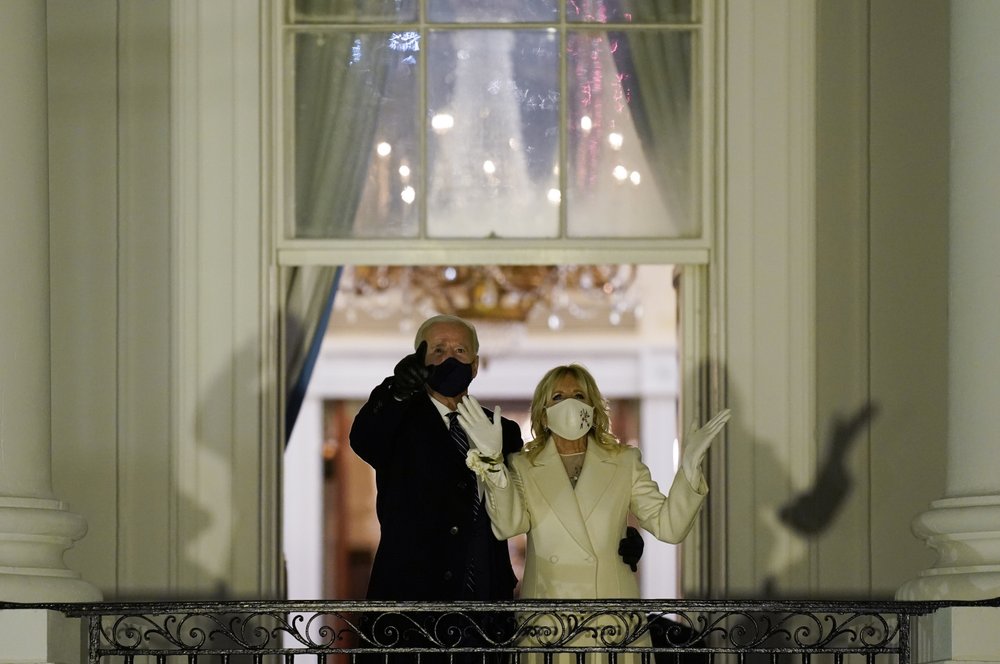
Joe Biden was sworn in as the 46th president of the United States, declaring that “democracy has prevailed” and summoning American resilience and unity to confront the deeply divided nation’s historic confluence of crises. Denouncing a national “uncivil war,” Biden took the oath Wednesday at a U.S. Capitol that had been battered by an insurrectionist siege just two weeks earlier. Then, taking his place in the White House Oval Office, he plunged into a stack of executive actions that began to undo the heart of his polarizing predecessor ’s agenda on matters from the deadly pandemic to climate change. At the Capitol, with America’s tradition of peaceful transfers of power never appearing more fragile, the ceremony unfolded within a circle of security forces evocative of a war zone and devoid of crowds because of the coronavirus pandemic. Instead, Biden gazed out on a cold Washington morning dotted with snow flurries to see over 200,000 American flags planted on the National Mall to symbolize those who could not attend in person. “The will of the people has been heard, and the will of the people has been heeded. We’ve learned again that democracy is precious and democracy is fragile. At this hour, my friends, democracy has prevailed,” Biden declared in his speech. “This is America’s day. This is democracy’s day. A day of history and hope, of renewal and resolve.” History was made at his side, as Kamala Harris became the first woman to be vice president. The former U.S. senator from California is also the first Black person and the first person of South Asian descent elected to the vice presidency and the highest-ranking woman ever to serve in the U.S. government. Biden never mentioned his predecessor, who defied tradition and left town ahead of the ceremony, but his speech was an implicit rebuke of Donald Trump. The new president denounced “lies told for power and for profit” and was blunt about the challenges ahead. Central among them: the surging virus that has claimed more than 400,000 lives in the United States, as well as economic strains and a national reckoning over race. “We have much to do in this winter of peril, and significant possibilities. Much to repair, much to restore, much to heal, much to build and much to gain,” Biden said. “Few people in our nation’s history have been more challenged, or found a time more challenging or difficult than the time we’re in now.” Biden was eager to go big early, with an ambitious first 100 days including a push to speed up the distribution of COVID-19 vaccinations to anxious Americans and pass a $1.9 trillion economic relief package. It included a blitz of executive orders on matters that don’t require congressional approval — a mix of substantive and symbolic steps to unwind the Trump years. His actions included re-entry into the Paris Climate Accords and a mandate for wearing masks on federal property. “There’s no time to start like today,” a masked Biden said. in the Oval Office. Then he swore in hundreds of aides — virtually — telling them, “You’re my possibilities.” The absence of Biden’s predecessor from the inaugural ceremony underscored the national rift to be healed. But a bipartisan trio of former presidents — Bill Clinton, George W. Bush, and Barack Obama — were there to witness the transfer of power. Trump, awaiting his second impeachment trial, was at his Florida resort by the time the swearing-in took place. Biden, in his third run for the presidency, staked his candidacy less on any distinctive political ideology than on galvanizing a broad coalition of voters around the notion that Trump posed an existential threat to American democracy. Four years after Trump’s “American Carnage” speech painted a dark portrait of national decay, Biden warned that the fabric of the nation’s democracy was tearing but could be repaired. “I know the forces that divide us are deep and they are real. But I also know they are not new. Our history has been a constant struggle between the American ideal that we are all created equal and the harsh, ugly reality that racism, nativism, fear, demonization have long torn us apart,” Biden said. “This is our historic moment of crisis and challenge, and unity is the path forward and we must meet this moment as the United States of America.” Swearing the oath with his hand on a five-inch-thick Bible that has been in his family for 128 years, Biden came to office with a well of empathy and resolve born by personal tragedy as well as a depth of experience forged from more than four decades in Washington. At age 78, he is the oldest president inaugurated. Both he, Harris, and their spouses walked the last short part of the route to the White House after an abridged parade. Biden then strode into the Oval Office, a room he knew well as vice president, for the first time as commander in chief. At the Capitol earlier, Biden, like all those in attendance, wore a face mask except when speaking. Tens of thousands of National Guard troops were on the streets to provide security precisely two weeks after a violent mob of Trump supporters, incited by the Republican president, stormed the building in an attempt to prevent the certification of Biden’s victory. “Here we stand, just days after a riotous mob thought they could use violence to silence the will of the people,” Biden said. “To stop the work of our democracy. To drive us from this sacred ground. It did not happen. It will never happen. Not today, not tomorrow. Not ever. Not ever.” The tense atmosphere evoked the 1861 inauguration of Abraham Lincoln, who was secretly transported to Washington to avoid assassins on the eve of the Civil War, or Franklin Roosevelt’s inaugural in 1945, when he opted for a small, secure ceremony at the White House in the waning months of World War II. But Washington all but deserted downtown and in its federal
Personnel update: Rob Couch back at Bradley after a year of service at HUD

After a year serving as the Department of Housing and Urban Development (HUD) Federal Financial Monitor for Puerto Rico and the U.S. Virgin Islands, Rob Couch has rejoined Bradley’s Banking and Financial Services Practice Group. Couch was selected for the position by HUD Secretary Ben Carson in response to reports of financial mismanagement and corruption in Puerto Rico. As a career member of HUD’s Senior Executive Service, Couch oversaw HUD’s Community Development Block Grants (CDBG)-Disaster Recovery efforts in Puerto Rico, which involves aid intended to help the island nation’s recovery from Hurricanes Maria and Irma in 2017 and to help it prepare for future natural disasters. Prior to this most recent year-long service with HUD, Couch also served as general council of HUD from 2006 to 2008 before joining Bradley’s Banking and Financial Services Practice Group in July 2009. He also served as President of Ginnie Mae and as Chairman of the Mortgage Bankers Association. He has also served as a commissioner on the Bipartisan Policy Center’s Housing Commission, was a member of President George W. Bush’s Task Force on the Status of Puerto Rico, President and CEO of New South Federal Savings Bank in Birmingham, and General Counsel and CFO of First Commercial Bancshares. “We are pleased to welcome Rob back to Bradley,” said Bradley Chairman of the Board and Managing Partner Jonathan M. Skeeters. “His wealth of knowledge and the breadth of his experience across the financial services industry, particularly with regard to its interplay with federal and state regulatory bodies, as well as government-sponsored enterprises, is exceptional. Rob’s return further deepens the resources available to our clients through our national Banking and Financial Services team.” “I am excited to be returning to Bradley,” stated Couch. “The firm is a leader in the financial services industry, and I look forward to helping our financial institution clients as they navigate the legal and business challenges facing the industry as we witness the changes in Washington and the continuing impact of the pandemic.” Couch will focus on mortgage lenders and investors in both the forward mortgage and reverse mortgage industries, affordable housing, and regulatory matters involving HUD, Ginnie Mae, FHA, and other government-sponsored enterprise matters. He will also assist clients with a broad array of legal and strategic issues across the housing industry. In addition to his work with HUD and Bradley, Couch has also written a book, “Now What?: So You Think You Want to Retire”. Amazon describes the book, which takes a lighthearted approach to planning your retirement, saying, “Rob Couch uses the analogy of one of life’s final road trips to explore his goals for what (he hopes) is the last third of his life–and how to best increase the odds of reaching them. Couch eschews the usual topic of financial independence and instead focuses on well-being, mental fitness, resilience, spirituality, and laughter as the keys to a well-spent retirement. After confessing a lack of professional training in any of these topics, he reviews current academic research from a layman’s perspective, ultimately developing his own matrix for assessing the endless possibilities for an engaged retirement. Part II of his book describes the application of the matrix to five disparate activities, ranging from Sacred Harp singing to stand-up comedy. Along the way, he has a good deal of fun and learns some surprising lessons about his own personality. Whether you are approaching retirement age, have already pulled the trigger, or know a loved one who is facing this stage of life, “Now What?” is an enjoyable and lighthearted way to examine the topic.”
Political fight brewing over Joe Biden’s White House budget chief nominee
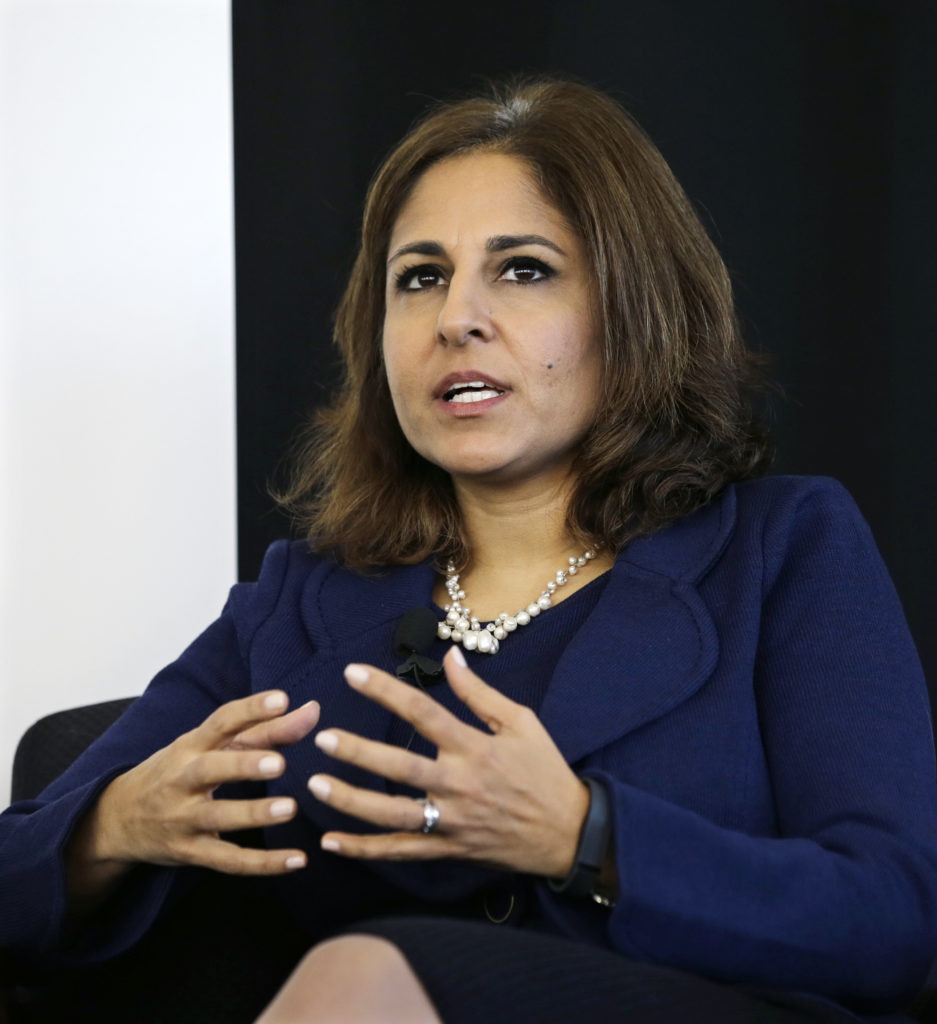
President-elect Joe Biden’s pick to lead the Office of Management and Budget is quickly emerging as a political battle that could disrupt his efforts to swiftly fill out his administration. Some Republicans are expressing doubt that Neera Tanden could be confirmed by the Senate after she spent years attacking GOP lawmakers on social media — and many panned the choice. Arkansas Republican Sen. Tom Cotton claimed Tanden’s rhetoric was “Filled with hate & guided by the woke left.” Texas Republican Sen. John Cornyn said Tanden’s “combative and insulting comments” about Republican senators created “certainly a problematic path.” He called her “maybe (Biden’s) worst nominee so far” and “radioactive.” Potential Budget Committee Chair Lindsey Graham, R-S.C., was less hostile, telling reporters, “Let’s see what happens.” Moderate Susan Collins, R-Maine, a target of Tanden’s, said, “I do not know her or much about her, but I’ve heard she’s a very prolific user of Twitter.” Such sentiment is notable considering the GOP’s general reluctance to criticize President Donald Trump’s broadsides on Twitter. But like all of Biden’s nominees, Tanden has little margin for error as she faces confirmation in a closely divided Senate. That could be especially daunting for Tanden, the former adviser to Hillary Clinton and the president of the center-left Center for American Progress, given her history of political combat. Biden’s transition team released a litany of praise for Tanden from figures including Sen. Elizabeth Warren of Massachusetts and former Georgia gubernatorial candidate Stacey Abrams. Other Democrats also rushed to defend Tanden’s nomination. Former Obama aide Valerie Jarrett said Tanden “grew up on welfare and lived in public housing. She experienced first hand the importance of our social programs. Her extraordinary career has been devoted to improving opportunities for working families. She is an excellent choice to lead OMB.” “Neera Tanden is smart, experienced, and qualified for the position of OMB Director,” added Ohio Sen. Sherrod Brown, a member of the party’s progressive wing. “The American people decisively voted for change – Mitch McConnell shouldn’t block us from having a functioning government that gets to work for the people we serve.” On the Senate floor, Democratic leader Chuck Schumer said it’s impossible to take Republicans’ criticism of Tanden seriously. “Honestly, the hypocrisy is astounding. If Republicans are concerned about criticism on Twitter, their complaints are better directed at President Trump,” Schumer said. At OMB, Tanden would be responsible for preparing Biden’s budget submission and would command several hundred budget analysts, economists, and policy advisers with deep knowledge of the inner workings of the government. If Democrats should win runoff elections for Georgia’s two GOP-held Senate seats, Tanden’s job would become hugely important because the party would gain a slim majority in the chamber. That would allow them to pass special budget legislation that could roll back Trump’s tax cuts, boost the Affordable Care Act, and pursue other spending goals. OMB would have a central role in such legislation. Top Democrats, Biden included, supported anti-deficit packages earlier in their careers, but the party has since changed. Biden was a force behind the establishment of the Obama deficit commission, which was created to win votes of Democratic moderates to pass an increase in the government’s borrowing cap and was chaired by former Clinton White House chief of staff Erskine Bowles. Tanden shares a commonly held view among Democratic lawmakers that Republicans usually profess concerns about deficits only when Democrats are in power, pointing to tax cut packages passed in the opening year of Trump’s administration and former President George W. Bush’s 2001 tax cut. Republished with the permission of the Associated Press.
Donald Trump — ‘No Mr. Nice Guy’ — shows softer side to win voters
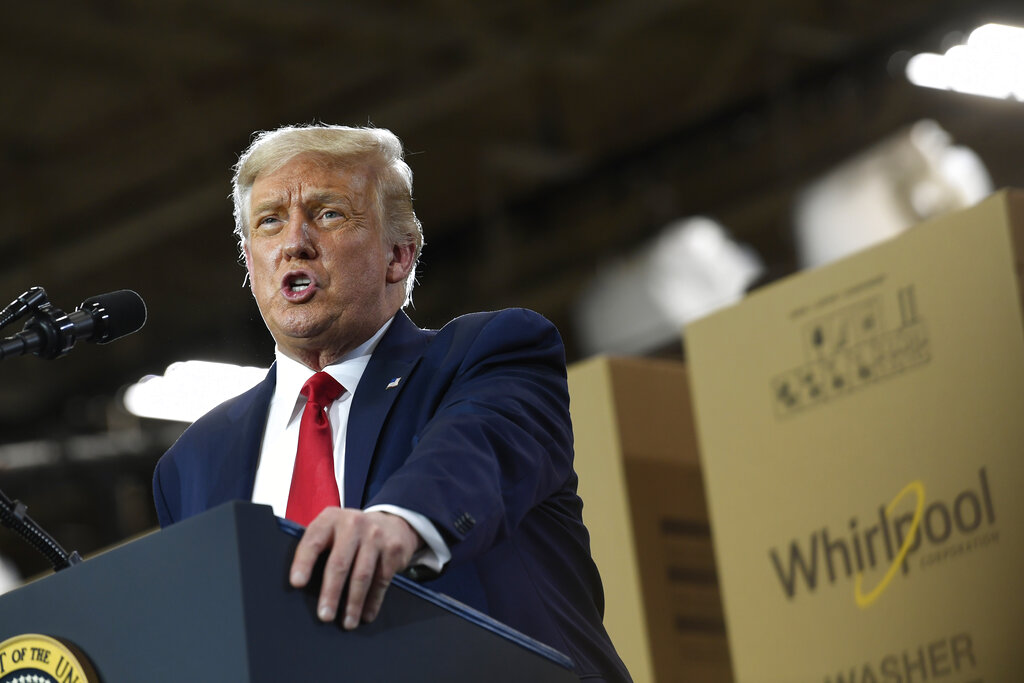
Competing depictions of the president come after the Democrats spent last week showcasing the compassion of Joe Biden.
Democrats make it official, nominate Joe Biden to take on Donald Trump

For Biden, who has spent more than three decades eyeing the presidency, the moment was the realization of a long-sought personal goal.
In virus talks, Nancy Pelosi holds firm; Steven Mnuchin wants a deal

There are limits, and legal pitfalls, in trying to make an end run around the legislative branch.
John Lewis mourned as ‘founding father’ of better America
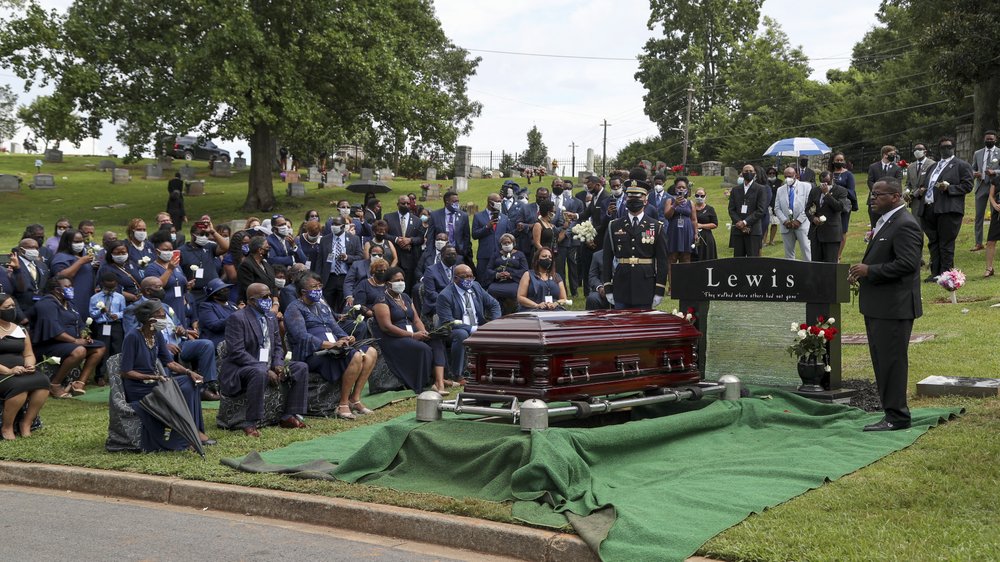
Former President Barack Obama called Lewis “a man of pure joy and unbreakable perseverance” during a fiery eulogy that was both deeply personal and political.
Donald Trump’s attacks seen undercutting confidence in 2020 vote

It was a startling declaration about one of the pillars of American democracy, all the more so given its source. The president of the United States last week publicly predicted without evidence that the 2020 presidential election would be “the most corrupt election in the history of our country.” “We cannot let this happen,” Donald Trump told an audience of young supporters at a Phoenix megachurch. “They want it to happen so badly.” Just over four months before Election Day, the president is escalating his efforts to cast doubt on the integrity of the vote. It’s a well-worn tactic for Trump, who in 2016 went after the very process that ultimately put him in the White House. He first attacked the Republican primaries (“rigged and boss controlled”) and then the general election, when he accused the media and Democratic rival Hillary Clinton’s campaign of conspiring against him to undermine a free and fair election. “The process is rigged. This whole election is being rigged,” he said that October when polls showed him trailing Clinton by double digits as he faced a flurry of sexual misconduct allegations. Then, as now, election experts have repeatedly discredited his claims about widespread fraud in the voting process. In a country with a history of peaceful political transition, a major-party candidate’s efforts to delegitimize an election amounted to a striking rupture of faith in American democracy. But to do the same as president, historians say, is unprecedented. “Never,” said presidential historian Douglas Brinkley when asked whether any past U.S. president had ever used such language. “What you’re seeing is someone who’s an autocrat or a dictator in action.” This year, Trump has seized on efforts across the country to expand the ability of people to vote by mail. It’s a movement that was spurred by the coronavirus, which has infected more than 2.4 million people in the U.S. and killed more than 125,000 nationwide. The virus is highly contagious and especially dangerous for older people, who typically vote in higher numbers and have been advised by federal health authorities to limit their interactions with others. There is no evidence of widespread voter fraud through mail-in voting, even in states with all-mail votes. Trump and many members of his administration have themselves repeatedly voted via absentee ballots. But that hasn’t stopped Trump from accusing Democrats of trying to “rig the election by sending out tens of millions of mail-in ballots, using the China virus as the excuse for allowing people not to go to the polls.” “People went to the polls and voted during World War I. They went to the polls and voted during World War II. We can safely go to the polls and vote during COVID-19,” he said in his Phoenix speech. Trump’s complaints come as he has been lagging in both internal and public polls. The criticism is seen by some as part of a broader effort by Trump to depress turnout by making it harder for people, especially in cities, to vote safely, and to lay the groundwork for a potential challenge to the results in November if he loses. Trump and his campaign vociferously deny this. Julian Zelizer, a presidential historian at Princeton University, said Trump may be trying to preempt the sting of a humiliation if he fails to win a second term. But Zelizer said Trump also appears to be “setting up the foundation for taking action.” “What I do think is very realistic is a replay of 2000,” he said, referring to the legal saga in which the Supreme Court stepped in to resolve a dispute over which candidate had won Florida. Republican George W. Bush‘s ultimate win in the state gave him a general election victory over Democrat Al Gore. If this year’s election is close, Zelizer said, Trump could turn to the courts “and wage a political campaign to say this is being stolen and tie up efforts to count the votes.” Brinkley was even more alarmist, questioning whether Trump would vacate the office if he lost. “Trump is laying down his markers very clearly that he’s not going to leave the White House. I think that he’s just setting the stage,” Brinkley said, to say “‘I’m not leaving. It was a fraudulent election.’” Even barring such an extreme move, Brinkley said the president’s rhetoric undermines public confidence in the electoral system. “It creates mayhem and it breaks the heart of what a democracy is.” Americans already have widespread concerns about the security and integrity of elections. A February poll from The Associated Press-NORC Center for Public Affairs Research found that only about one-third have high confidence that votes in the 2020 election will be counted accurately. Americans’ support for mail-in voting has jumped amid concerns over the virus, with 6 in 10 now saying they would support their state allowing people to vote by mail-in ballot without requiring a reason, according to an April survey. Democrats are far more likely to support it than Republicans, a partisan split that has emerged since 2018, suggesting Trump’s public campaign may be resonating with his GOP backers. White House officials and Trump’s campaign say he has raised the issue because Democrats are trying to use the virus as an excuse to tilt voting rules their way. “I think the president is only talking about this because Democrats have been going around to try to change rules in their favor under the guise of the virus. … This isn’t a fight he picked,” said Trump campaign political adviser and senior counsel Justin Clark. “The coronavirus does not give us an excuse to radically alter our way of voting.” Officials noted Trump has voiced support for the use of absentee ballots when voters have a legitimate reason, although he has not said whether that includes fear of contracting the virus. “Imposing a new voting system in a hurried fashion ahead of November only exacerbates the real, underlying concerns about the security of voting by mail without the proper safeguards,” said White

